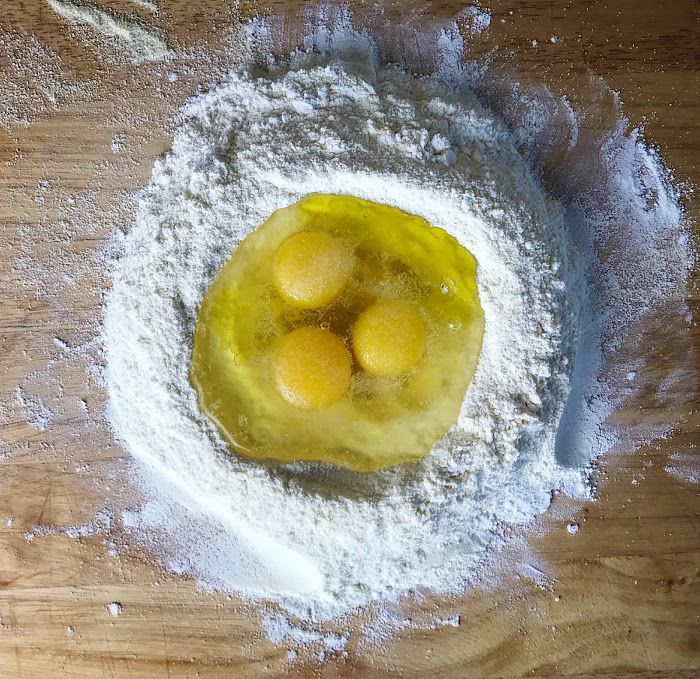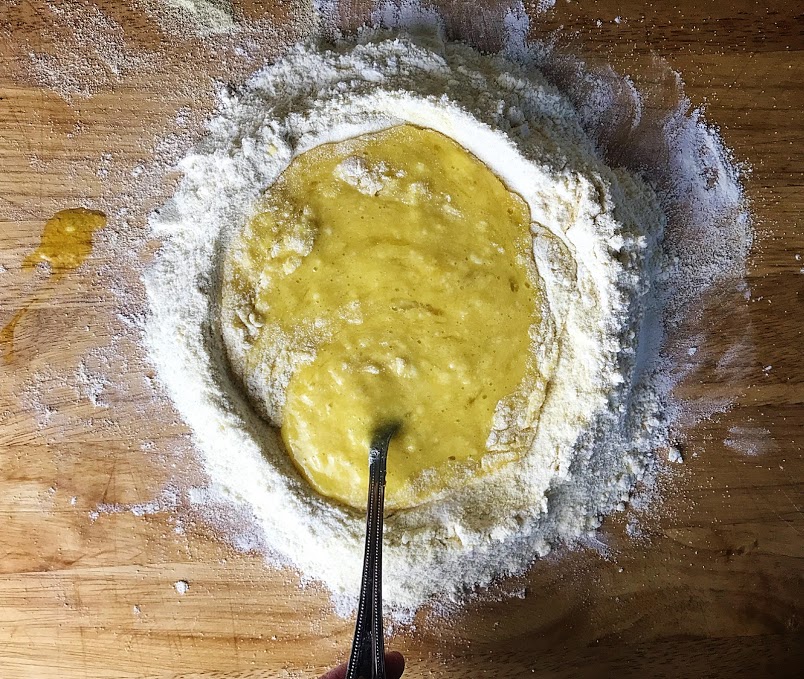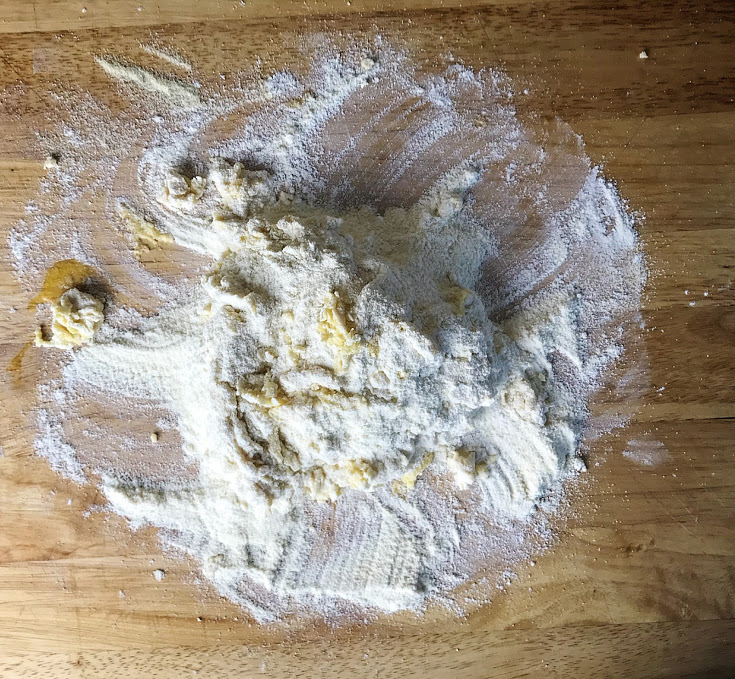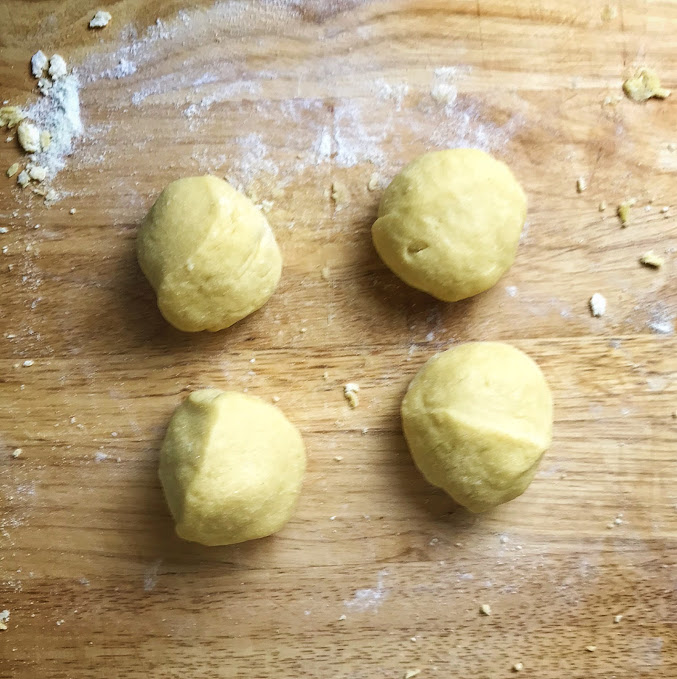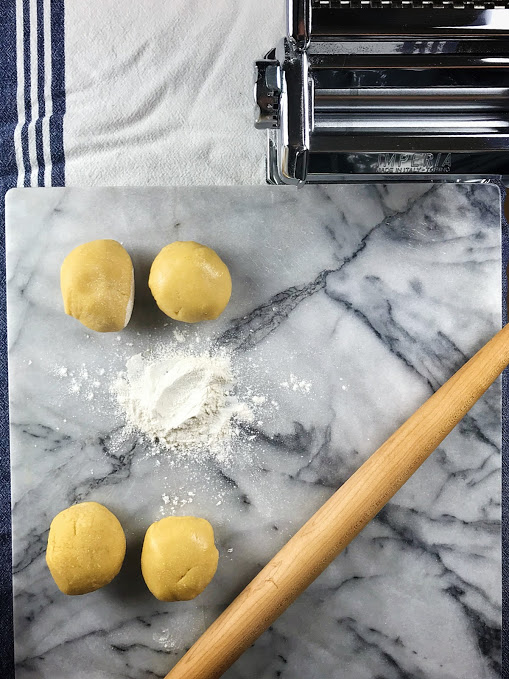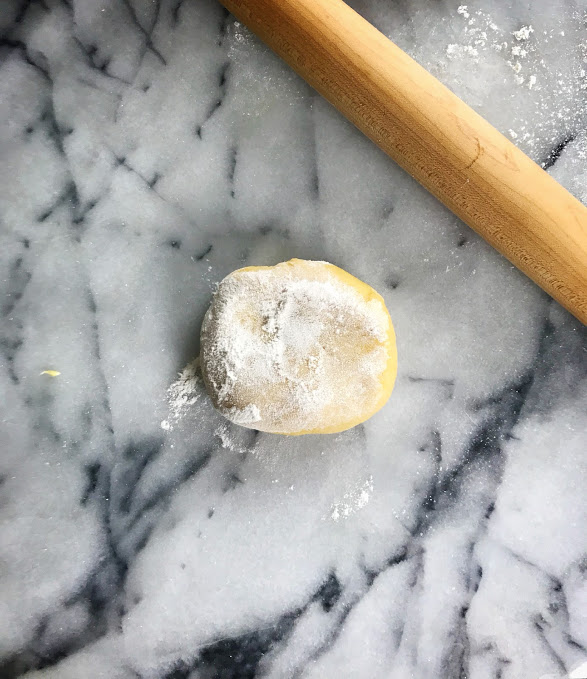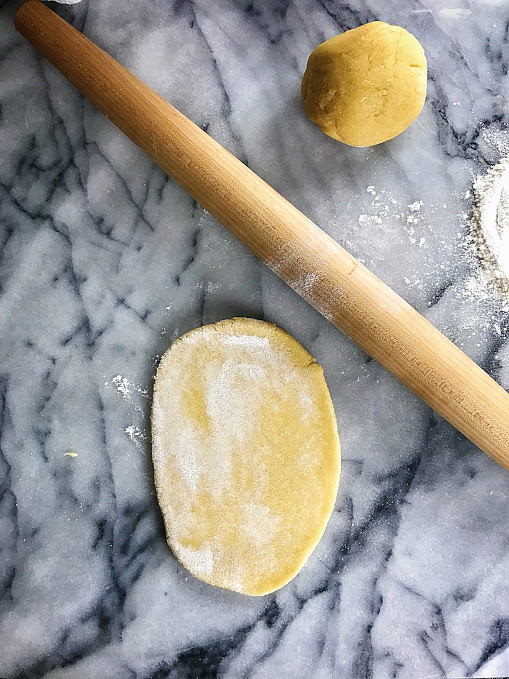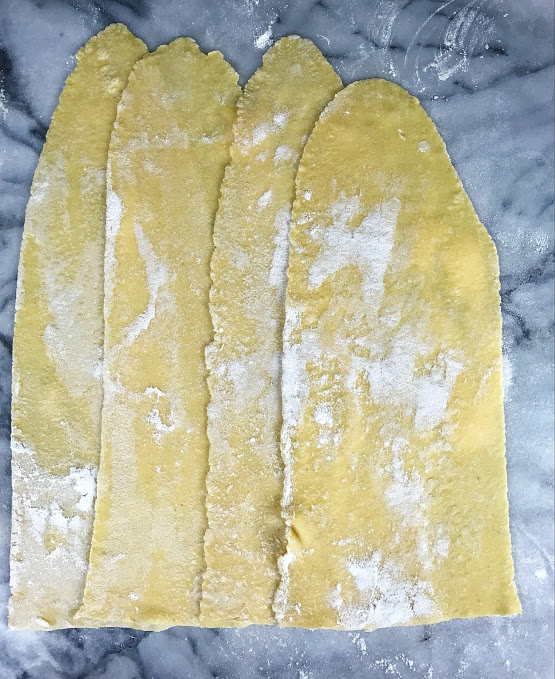FRESH PASTA
January 2018 | The Honest Spoon
I'm fairly new to the fresh pasta game. I was intimidated by the process for a while. Then, once I got comfortable with it, I couldn't find a recipe I could really get on board with.
Here's what I've learned:
1. Fresh Pasta is delicious. Possibly addicting. Once you get the hang of it, it’s also pretty simple to make.
2. A balanced recipe is EVERYTHING. Too much all purpose flour = too mushy. Too much semolina = too hard
3. Buy a pasta maker you are comfortable with. I use a countertop pasta maker.
What you'll need:
1. pasta machine or equivalent mixer attachments.
2. large flat work surface, wood board, or pastry board
3. rolling pin
4. kitchen towels or tablecloth
5. large flat area (dinner table) or large basket to dry your pasta.
This recipe makes enough for four people. If you want to make more, I suggest making this in separate batches. You see, if you make this by hand, like me, you will be kneading this dough. Pasta dough is dense, not soft like bread dough. Kneading in smaller batches is manageable. Even if you decide to make this in your stand mixer, give the machine a break. Make the dough in as many batches as you need. Once the dough is ready, you will make the pasta noodles all at once.
PIN THIS RECIPE
FRESH PASTA
INGREDIENTS:
1 1/2C semolina flour
1 1/2C unbleached white flour
1 teaspoon salt
3 large eggs, or 6 egg yolks room temperature
2 teaspoons extra virgin olive oil
1/4C room temperature water
METHOD:
1. Measure your flours, add them directly to the mixing board. Mix them together with a fork and make a well in the center.
2, Crack your eggs directly into the well. Add salt, water and olive oil to the eggs. Whisk the egg mixture.
3. Once the eggs are whisked, gradually start to take in flour from the edges.
4. Continue to pull flour away from the edges until all is combined. Mixture should be firm, yet pliable, and not sticky. * If mixture is too firm, add additional water one teaspoon at a time.
5. Now, lightly flour your board surface with white flour and begin to knead the pasta dough. Knead for approximately 3 minutes until dough is smooth. Add flour to your board, as needed, throughout this process. Your dough should not stick to the surface.
6. Divide your dough into four equal parts. Roll into balls. Wrap each ball in plastic wrap and let rest at room temperature for 30 minutes to one hour. Resting the dough allows the gluten to develop- do not skip this step.
7. Set up your pasta maker on a table or counter edge. Make sure it's secure!!
8. Unwrap your first piece of dough, lightly flour both sides and roll out it out to about one-quarter inch thick. Keep the shape oblong. It will work better in the past maker this way!
9. My pasta maker has 6 settings. 1 for thickest. 6 for thinnest. You will roll the dough through each setting 1 to 5 until you have achieved the 2nd thinnest layer. TIPS: don't skip settings. Your dough will get crumbly. Also, at some point, your dough will get too long. Be ready to cut it in half and resume until you have processed it through all the settings.
10. Once you have finished one sheet of pasta, set it on the lightly floured board, sprinkle the top with a little flour. Repeat and layer as you go. Keep each piece floured otherwise it will stick. If it sticks, you will need to run the stuck sheets through the machine again. To avoid this, a little flour between layers is key! TIP: if your pasta sheets are getting too dry, cover with a clean dishtowel.
11. Once you have all your pasta sheets ready, it's time to make the noodles. Pick your desired noodle size and begin rolling these through.
12. Noodles need to dry for a short time before cooking. You can either dry them on a flat flour surface or on a rack. Personally, I like to go old school....I use a big basket, line it with clean kitchen towels, and dry my pasta over the edges, We did it this way growing up and it works perfectly fine!
13. Bring a pot of water to a rapid boil. Add salt.
14. Add your fresh pasta noodles and cook for about 3 minutes. It will rise to the top once it’s done. Fresh pasta cooks MUCH faster than store-bought dried pasta. If you overcook this it will get very mushy very fast.
15. Drain and serve with desired sauce.
Please let me know how it turned out! I love to hear your feedback!!

